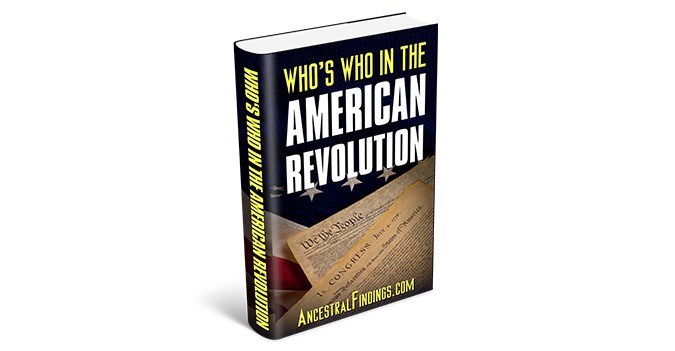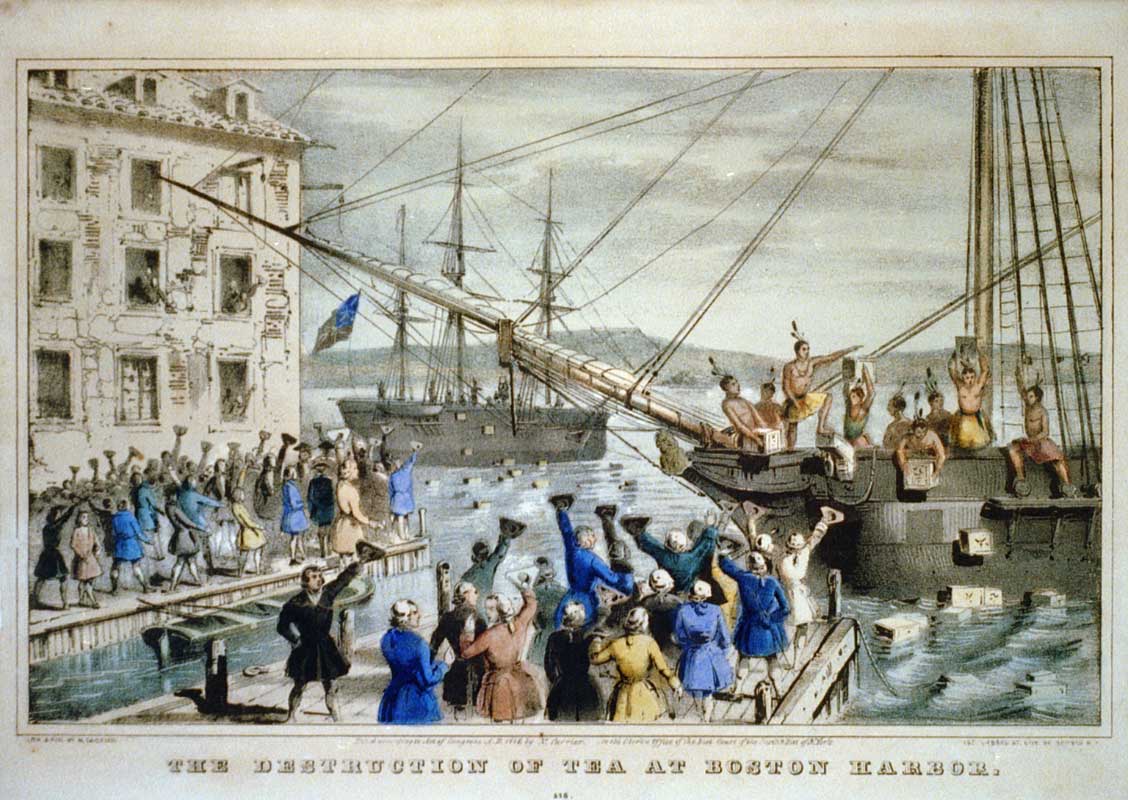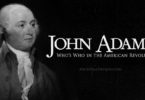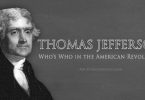Besides George Washington and Benjamin Franklin, probably one of the most famous names associated with the American Revolution is Samuel Adams. He is more than just the namesake of an American beer, too. He is one of the most influential players in the Revolution, taking part in many of its most famous incidents, and was a leading voice in the movement for independence. While he never took a part in the federal government of the new United States he helped to create, the American Revolution never would have gotten as far as it did, with as many people on board with the idea of breaking from Great Britain, without Samuel Adams.
Born September 27, 1722, in Boston, Massachusetts, Adams was a second cousin to the more famous John Adams (the one who eventually became our second U.S. president). This means they shared a set of great-grandparents in common. A member of a family with a staunch Puritan background like his cousin, Samuel Adams was the son of Samuel Adams, Sr. and Mary Fifield. He was one of twelve children born to the couple, and one of only three to survive past early childhood.
Adams attended the Boston Latin School, and then was admitted to Harvard University when he was fourteen. His parents hoped his education would lead him into the ministry, but young Samuel eventually decided politics was where his true interests lay. He graduated from Harvard when he was 18, then went on to obtain his Master’s degree three years later.
Adams’s early desire for the colonies to break free from Great Britain seemed to stem from a banking controversy his father was involved in, and while almost bankrupted the family. Adams, Sr. and the Boston Caucus created a land bank in 1739, and the bank gave paper money to borrowers who mortgaged their land against it as collateral. The citizens of Boston supported the bank, as did the Massachusetts House of Representatives. Yet, the aristocrats of Boston opposed it, and these were the ones who supported the Britain-appointed Royal Governor. These people used their influence to persuade the Parliament in Britain to dissolve the bank in 1741. The directors of the bank. Samuel Adams’s father included, were left personally liable for the paper money they lent that was still being circulated, and it had to be paid back in silver and gold. Lawsuits regarding the bank continued for years, even after Adams Sr.’s death, and Samuel defended his family’s land and belongings from being taken by the British government more than once. These lawsuits were reminders to him that Britain did not care about the best interests of the colonies or those who lived there.
Adams wasn’t sure what he wanted to do after Harvard and tried to go into business, first at a counting house (which did not last long), and later with a thousand pounds, his father gave him. Adams lent half to a friend who did not pay it back, and casually spent the rest, proving business did not interest him. His father made him a partner in the family’s malt business (malt being necessary for brewing beer), and he worked there for about five years. Then, the world of politics called to him again with British impressment of colonials into their Navy against their will.

Who’s Who in the American Revolution (Free eBook)
Adams and a friend started an anti-Britain newspaper, and Adams was supported by the Boston Caucus in winning his first political office in 1747, as a clerk at the Boston Market. Many other political offices followed, including tax collector (he usually didn’t collect taxes, which bankrupted the town meeting, and led to many lawsuits against him, but these only made him more popular with the people).
He married Elizabeth Checkley in 1749, and they had six children together, two of whom survived childhood. Elizabeth died eight years later after giving birth to a stillborn son, and Adams married again in 1764 to Elizabeth Wells; however, they had no children together.
Adams was the first to speak out about Britain’s policy of taxation without representation regarding the colonies, after the Sugar Act of 1764. British lawmakers blamed Adams for outbreaks of violence in the colonies after the Stamp Act the next year, and modern historians do not disagree, though Adams himself did not directly participate in any mobs or destruction of property. He was elected to the Massachusetts House of Representatives after this, likely because the influence he had with the British merchants who convinced Parliament to not implement the tax.
Adams continued to be a thorn in the side of Britain for a while, disobeying orders from the Royal governor, Parliament, and the King. He encouraged a boycott of British imports to the colonies, and the removal of British troops sent to enforce royal and parliamentary decrees. Some historians and even contemporaries believe he instigated the Boston Massacre to promote an agenda of American independence, while others believe he had nothing to do with it. He did, however, convince his cousin John Adams to defend the British soldiers involved, yet wrote scathing letters to local papers about their subsequent acquittal.
In 1773, Adams presided over a meeting against the new Tea Act, and the members of the meeting got so riled up over it, they went out to the harbor and threw British tea imports into the water. Adams never revealed if he watched or actually took part, but he used the Boston Tea Party to capitalize on his anti-British control position in the local newspapers, arguing the tea incident was perfectly acceptable and legal and was protesting an illegal act in the only means left to them.

This iconic 1846 lithograph by Nathaniel Currier was entitled “The Destruction of Tea at Boston Harbor”; the phrase “Boston Tea Party” had not yet become standard. (Wikipedia)
Britain came down hard on the colonies after the Tea Party, especially Massachusetts. Adams organized resistance to the troops stationed there, and to the royally appointed governor. He kept the House of Representatives meeting by closing the doors to keep the governor from coming in and dissolving the group. An intra-colonial congressional meeting was proposed at one of these meetings, and the First Continental Congress was arranged to meet in Philadelphia to discuss the quarrel with Britain. Adams was elected as one of five delegates from Massachusetts. Because he was broke most of the time and cared nothing for fashion, his friends took up a collection to make sure he could go to the Congress suitably dressed.
Adams was also elected to the Second Continental Congress. In between the two congresses, Adams served on the Boston Town Meeting and the Massachusetts Provincial Congress… an illegal body independent of British authority. The Provincial Congress established the first Minutemen militia members and made sure local residents were following their decrees, rather than British laws.
John Hancock was selected to go to the Second Continental Congress, and he and Adams went together. On their way there, it was discovered that the royal governor, Thomas Gage, had gotten word they were trying to leave town, and so Hancock and Adams stayed overnight at Hancock’s childhood home in Lexington, MA. Gage’s search for them, and order to take any colonial weapons his soldiers found stored, led to Paul Revere’s ride to warn then the British were coming after them. It also led to the first shots fired in the American Revolution in neighboring Concord, and then in Lexington, just as Hancock and Adams escaped to Philadelphia.
Though the Second Continental Congress worked under a secrecy rule, so many of its activities are not documented, Thomas Jefferson credits Samuel Adams with being the one who had the most influence on steering the Congress toward declaring independence. Adams also served on many committees at this Congress, and was instrumental in expelling more than 300 British loyalists from Boston during the war and confiscating their property; he also opposed allowing them to come back after the war, saying they would undermine the newly independent nation’s development.
Adams continued to be involved in Massachusetts politics after the war and held offices pretty regularly until his retirement in 1797. He even became involved with writing the Articles of Confederation, and later wrote against the proposed Constitution, being labeled an anti-Federalist. He and Hancock listened to all the arguments for the Constitution, and eventually agreed to support it as members of Massachusetts’s ratifying committee, with the caveat that certain amendments be added to it, and this was agreed to.
Adams died October 2, 1803, at the age of 81, and was buried at the Granary Burying Ground in Boston. The Boston newspaper, the Independent Chronicle, gave him the posthumous title, “Father of the American Revolution.” Historians have agreed.






